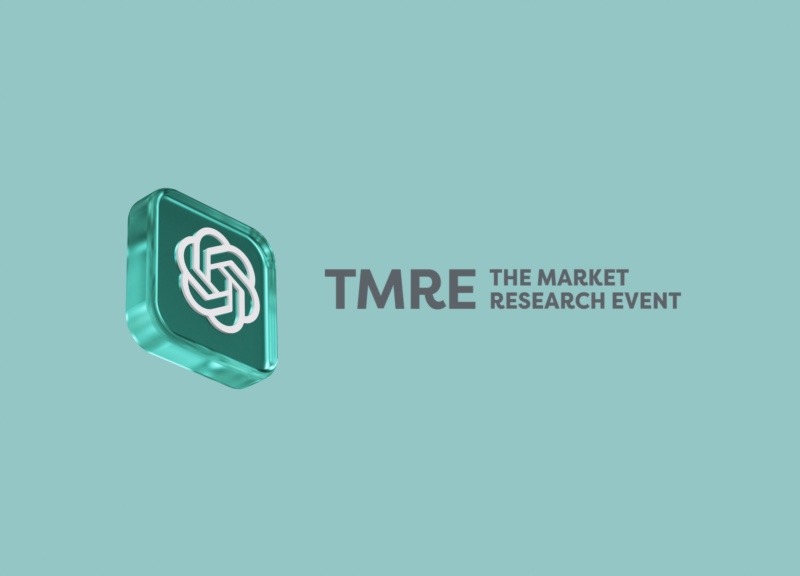As we welcome 2024 and all its possibilities with open arms, we thought now would be the perfect time to explore some of the trends — current and emerging — we believe will have the biggest impact on qualitative market research. Let’s start with the trends we see as gaining momentum in the year ahead.
Digital Qual Research Continues to Dominate
Ushered in by the pandemic, digital qualitative research is now the new norm — and will continue to be so in 2024 and well beyond. Survey findings show that 87% of researchers did over half of their qual research online in 2023, with 85% of them saying they’ll continue to do so over the next 12 months.
We go into the pros (and cons) of remote focus groups and interviews here, but the bottom line is this: digital research can help companies expand their reach of respondents more easily, conduct interviews more quickly and conveniently, while saving resources and money. Digital research extends beyond online focus groups, as well. In 2024, we expect researchers to keep using digital tools for all manner of activities including surveys, social media listening (more on that below), online discussion forums, data-mining, and more.
Smart Use of Mobile Market Research
Mobile devices are a key part of the digital conversation. Smart phones are ubiquitous; in 2023, 92% of Americans owned a smart phone, and spent around four hours a day on these devices. Researchers have realized that mobile phones provide an excellent platform to engage with respondents who are perfectly comfortable communicating via screens, taps, and swipes.
There are advantages to mobile phone research, starting with a low barrier to entry. Respondents don’t have to be at a specific place at a certain time to participate in a mobile-based interview or focus group, respond to a survey, or provide in-app feedback. They can just whip out their phones on the spot to provide in-the-moment, real-time reactions.
Respondents can also share responses in a wide range of ways — via text, voice messages, video, emojis, and even gifs. Mobile devices also allow researchers to conduct location-based research (thanks, GPS), as well as ethnographic research via daily video journals and notes apps. As such, we expect the mobile research trend to continue building steam.
More Social Media Research
The use of social media is also part and parcel of the shift toward digital qual market research. Researchers have already been using social media as a platform for asking questions, conducting polls and surveys, soliciting feedback, testing concepts and messaging, and showcasing prototypes. With Americans spending around two hours a day on social media apps, these platforms are an obvious place to find and connect with respondents.
In 2024, we predict advances in technology will make it easier and more attractive for qual researchers to embrace social media listening for sentiment analysis. There’s a growing list of shiny new tools that enable researchers to track keywords, hashtags, mentions, reviews, and sentiment across multiple social media platforms. Tracking this info can provide valuable insight into emerging trends, unmet needs, consumer preferences, and brand perception.
Ethnographic Research for B2B
Ethnographic research that’s immersed in the actual real-world environments where respondents live, work, and play has been around since the 1950s. So while it’s long been a staple for consumer research, we believe ethnographies offer great potential for B2B research as well — particularly in the field of technology.
We’ve recently tested out this theory ourselves, by using an ethnographic approach with one of our technology clients. For this particular study, we had respondents — specifically, software engineers — take over and physically use our moderator’s computer to play around with an application and provide real-time feedback. The insight we gleaned from this exercise was invaluable, and our clients were thrilled with the results.
Emotion Recognition and Neuromarketing Research
Emotion recognition technology uses algorithms and machine learning to identify and classify micro facial expressions that signify joy, sadness, surprise, fear, anger, disgust, contempt and more. Neuromarketing research takes it a step further, employing medical procedures including functional magnetic resonance imaging (fMRI) and electroencephalograms (EEG) to track and measure physiological changes in the brain to indicate and identify emotional responses.
Emotion recognition and neuromarketing research aren’t new concepts; some of the largest market research firms even have their own in-house labs set up for these kinds of studies. And if you don’t have the budget for these methods, there are lower-cost and less obtrusive devices that can track and measure a participant’s heart and respiration rates which indicate an emotional response as well.
With the emergence of AI, it will be interesting to see where these types of research approaches will go. AI-enabled eye tracking, for example, maps out eye gaze and movement to understand where a person is looking, what they’re looking at, where their gaze lingers, as well as pupil dilation (an indication of arousal). This is definitely a space we’ll be keeping our eye on.
Merging Qual and Quant
We’ve seen an increased need for and openness to a hybrid research approach that combines qualitative and quantitative, and we expect this merging to continue in 2024 and onward. And we’re here for it.
While they may seem diametrically opposed, quant and qual together can strengthen each other while providing a more holistic view of the research. Quant alone can get bogged down in data, making it harder to connect the dots and reveal the insight. Qual, on the other hand, can sometimes be hard to measure, with a lack of quantifiable “proof” to clarify how conclusions were drawn.
Integrate the two research worlds, and you have the what, why and how behind the data. This can result in more meaningful reports that also provide clients the proof-points they need to believe in the insight. Advances in technology and systems are making it easier for researchers to combine qual and quant data in a single platform, which also make it faster and less cost-prohibitive to do both.
A Case for Agile Market Research
Agile market research has been around for a while, as well, and there’s been some debate as to its effectiveness as a methodology. We see the increasing value of agile market research, but also the need for it to be done exceedingly well.
In the current business reality, things change very fast. As such, companies need answers to their questions now, which means they need quick, focused research studies and lots of them. Agile market research responds to this demand by taking an iterative approach to gathering consumer feedback to very specific questions along multiple points in the development of a product, service, or campaign.
Instead of taking weeks or months to test and collect respondent reactions, agile market research delivers answers in days. This allows companies to make on-the-fly tweaks as they go, and ideally launch their product/service/campaign more quickly.
In the hands of an inexperienced firm, agile market research can end up sacrificing quality for the sake of speed. That’s why it’s important to have researchers with first-hand industry knowledge and experience, who know exactly the right questions to ask and how to extract the critical insight quickly.
Now that we’ve addressed some of the current trends, let’s turn our vision toward those we see emerging in the year ahead.
AI As a Collaborative Tool
There’s no doubt that artificial intelligence will play an increasingly larger role in qualitative market research. We expect more research firms to embrace AI technology, apps, and services as a collaborative tool to help them drive efficiencies and productivity. A recent Qualtrics survey supports this, finding that 46% of researchers say they’re “very confident” with using AI in research, and 26% reporting they feel “extremely confident.”
We predict a turn toward AI for a broad range of research activities, from developing screeners, surveys and discussion guides, to weeding out bogus or unqualified respondents, to transcribing interviews, to quickly analyzing massive amounts of data from multiple sources, to generating attractive and compelling reports. But we caution that AI should not and cannot replace the human element when it comes to revealing actionable insights that businesses need to make strategic decisions. You can read more about that in our recent blog post here.
Prioritizing Data Privacy
All the hype about AI leads us to the next emerging hot topic for market research: data privacy, for both consumers and clients.
Today’s consumers are ever-more aware of and concerned about protecting their private data — especially online. According to Pew Research, 72% of Americans believe that almost all their online activity is being tracked, which understandably makes them uncomfortable. It can also make them less willing to participate in qual research studies.
In response to rising fears around data privacy, countries around the world are enacting stricter guidelines designed to protect personal information and give consumers more control over their own data. Moving into 2024, researchers need to be aware of and respond to the concerns of consumers as well as the compliance requirements of their governments. That means having clear and formalized data security protocols in place, as well as complete transparency on how data is collected and used.
Researchers will also need to take measures to protect themselves and their clients against malicious actors. GreenBook reports that upwards of 30% of market research qualifies as fraudulent, propelled by respondents who lie about their qualifications, bots and fake traffic completing surveys, and widespread identity theft. As such, it will be critical for researchers to implement robust safeguards from here on out.
We delve deeper into safeguarding data in our recent blog post here.
Let’s Hear it for Voice of Consumer (VoC) Research
Modern VoC research involves using technology and tools that analyze text and consumer sentiment across a range of digital and traditional channels and methods including surveys, interviews and focus groups, social media, feedback forms, online reviews, customer support interactions, customer journey mapping, and more. The goal is to capture what customers are saying about your product, services, and/or brand for authentic insight.
We expect VoC research to gain traction as companies continue to place an emphasis on customer experience and customer-centric strategies. VoC also plays a key role in developing customer personas that help companies better understand and respond to different audience segments.
VoC research, however, can be challenging and complex since it requires an omni-channel approach and sophisticated tools in order to reveal the complete picture of customer preferences, sentiment, and behavior. It’s also important to make sure the VoC data you collect truly represents your target audience, and that you maintain customer privacy and data security.
Diversity and Inclusion in Market Research
In 2022, 44.1% of the U.S. population was non-White. By 2044, over half of Americans is projected to belong to a minority group. The percentage of Americans who identify as LGBTQ+ is growing as well, especially among younger generations; in 2022, 10.5% of Millennials in the U.S. identified as LGBTQ+, while 20% of Gen Z did.
Our country’s population is aging, as well, with the median age coming in at just under 40 years — a number that’s expected to rise. Even as we get older as a country, younger generations are gaining power as consumers. Millennials now represent the largest group of consumers, and Gen Z’s buying power is going up.
All this to say: in 2024, it will be imperative for researchers to make sure their research samples and respondents reflect the diversity of their audiences — including ethnicity, cultural background, lifestyle, gender, age, and sexual preference. It will be especially important to include traditionally underrepresented populations such as women of color, people with disabilities, and members of the LGBTQ+ community.
Focus groups comprised of respondents who have similar experiences, preferences, and biases can often lead to skewed results. We get it: sometimes you need to find respondents who check off specific attributes — a certain age group, profession, demographic. But within the confines of the screener, and whenever possible, diversifying your groups and interviewees can help reveal richer, deeper insight that leads to better decisions.
Diversity and representation are an even bigger challenge when we consider how difficult it’s becoming to find respondents. Today’s consumers are increasingly likely to ignore phone calls, emails and texts from unknown sources, including field managers trying to recruit for research studies. Which leaves only those self-selecting consumers to respond and participate — and who often lack diversity. To address this challenge, qual researchers will need to lean hard into relationship-focused recruiting.
Beyond diversity, researchers must also work to ensure inclusivity with their studies. That requires creating environments where every participant feels listened to, valued, respected, and involved — regardless of who they are.
What Did We Miss?
Call us optimists (we certainly embrace that title), but we’re excited about the emerging tools, technologies, and methodologies researchers can leverage to unlock even greater insights that drive tomorrow’s innovations. As is the nature of our industry, we’re sure this list will continue to evolve as the year advances, and we’re curious to see what develops. We’d also be interested to hear about any trends you’d add to the list. Reach out, and let’s discuss.











